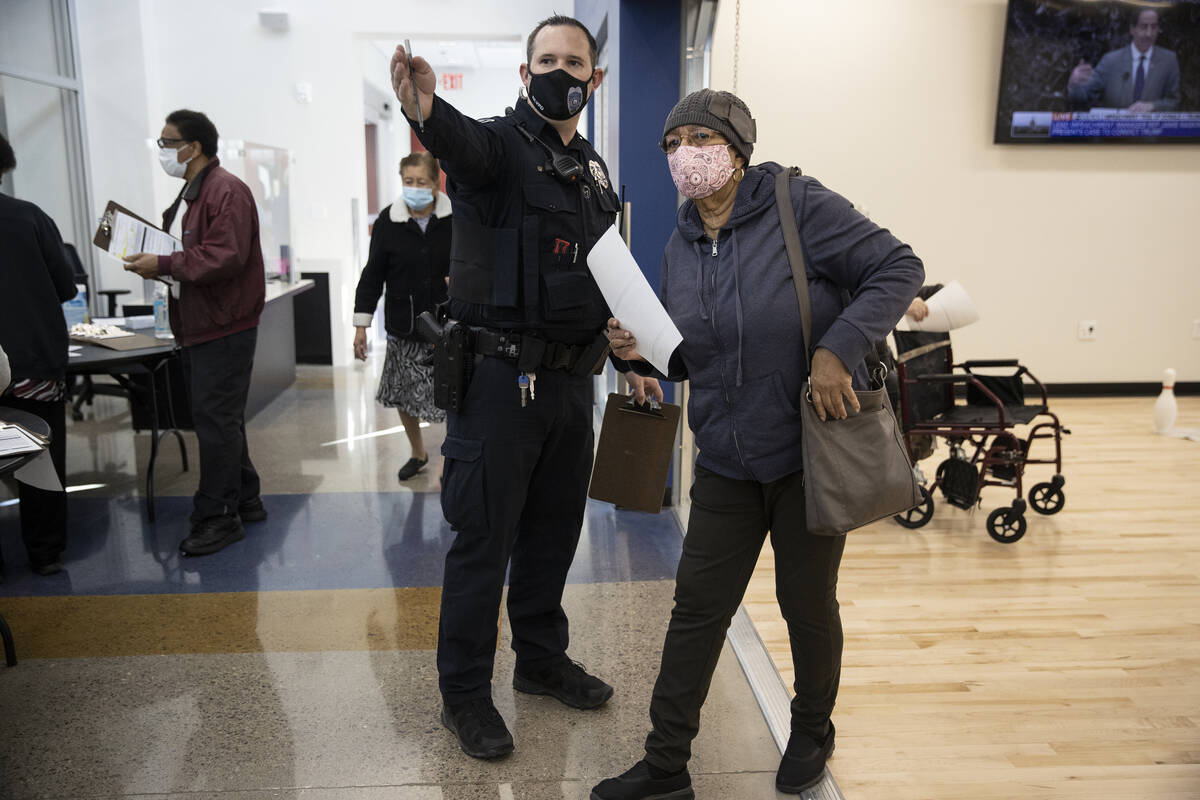High COVID rates shift from suburbs to north, east Las Vegas Valley

Where COVID-19 is spreading fastest in the Las Vegas Valley has changed again.
ZIP codes in North Las Vegas, eastern Las Vegas, and downtown Las Vegas all recorded more than 1,000 new infections per 100,000 residents in August, according to a Review-Journal analysis of Southern Nevada Health District data.
Home to many low-wage essential workers, the areas were among the hardest hit by the pandemic last year. But when the highly contagious delta variant took hold this June, COVID-19 was spreading fastest in wealthy suburbs in the west and south Las Vegas Valley.
UNLV epidemiologist Brian Labus said there’s no simple answer about the changes in hot spots shown by the data between the two months.
In June, he theorized that suburban residents could have had better access to testing at the time through private doctors, meaning their infections were more likely to be identified. Now, public testing sites are coming back online and more employers are requiring regular testing for unvaccinated workers.
“We have people who otherwise would not have been testing, getting testing,” he said. “So even if the disease doesn’t change, the picture changes.”
The shift in trends comes as newly identified cases have spiked in Clark County this summer. The health district identified about 9,000 in June, compared to about 21,500 in July and 23,000 in August. As of Wednesday, less than 4,000 new cases had been identified in September.
While the increase in cases across the county more than doubled between June and August, other areas of the valley have seen a much steeper increase.
In the Historic Westside of Las Vegas, a predominantly Black neighborhood, the number of new cases identified in August was more than five times greater than June, increasing from 60 to 355.
Two Latino neighborhoods that were hit hard by the virus last year saw the number of new cases identified each month more than quadruple in the same time frame. The 89030 ZIP code grew from 131 to 547 cases identified in each month, while 89110 increased from 179 to 805.
Case growth has been closer to the county average in ZIP codes containing neighborhoods like Rhodes Ranch, Southern Highlands and areas of Henderson, all of which saw high rates of transmission in June.
Labus said the August data aligns more closely with what health officials had expected this year.
The hardest-hit ZIP codes have lower rates of vaccination than the suburbs and their residents more often have underlying health conditions, Labus said. Both of those factors could lead to a more serious bout of COVID, making an infected person more likely to get tested.
“The areas of town with lower immunization rates would see higher rates of disease spread,” he said.
Contact Michael Scott Davidson at sdavidson@reviewjournal.com or 702-477-3861. Follow @davidsonlvrj on Twitter.